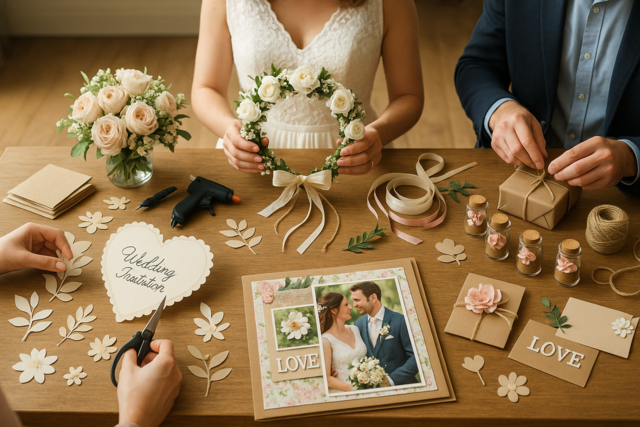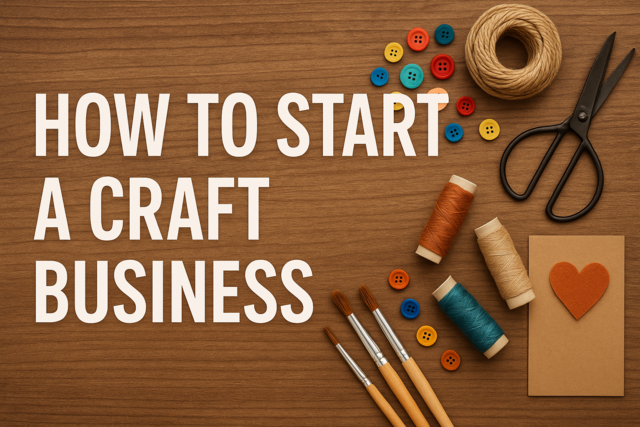Introduction: The career of an Image Consultant can be all inclusive or specific and more narrow. A person's image involves dealing with hair, make-up, clothes, mannerisms, etiquette, understanding of cultural norms, working within a client's budget, posture, speech, habits, grooming, and behaviors. A person's needs may be for different environments, for example; corporate affairs, the workplace, formal dinners, informal social situations, interviews, politics, film, modeling, presentations, a new job right out of college, or working in a new culture.
An Image Consultant has to decide how to begin. A consultant may decide to become employed by a firm that is already in existence, or work independently. Even those two choices are broad. There are many Image Consulting businesses across the world and they cater to many different types of need. Some work only with hair, make-up and fashion, some only with those who work in film, and others with clients who work only in corporate businesses. Some consultants work only with individuals while others give large group presentations about image. An Image Consultant might start working from home with a computer and a place to receive clients or even working virtually. This can give the consultant time to grow and figure out where to focus.
Most Image Consultants take specific training courses of some kind to gain detailed knowledge and certification. Courses are offered on-line, at community colleges, Harvard offers training in image consulting and there are a few other institutes around the world that you can physically attend. There are also national and international associations to join that keep the consultant current with trends and other industry knowledge.
Basically, there are several steps when working with clients in image consulting. There is an initial communication about your services and setting up the initial consultation for which you may not want to charge a fee. You just want to get them into your office and have a quick face to face to find out what they want and why, and what you have to offer. This should last no longer than 15-30 minutes. If they are interested, set up the first interview. During this short consultation, you tell them that the steps begin with a two- hour long interview, done in two meetings. At the first meeting you gather details and prioritize the needs with them. Then the two of you will meet about a week later to go over the plan of action for services and costs of these services and packages that might be available. This is a plan you will have developed specifically for the individual client. At this time the client will go over the plan with you and together you will make any adjustments required. The client will decide if he wants to proceed, how he wants to proceed and then you will put it all in writing and he will sign a contract for services. You will set up dates for the services to take place after they leave and communicate it in writing through e-mail and by phone. From there you just follow the plan, though the client and you may decide to tweak it at any time. The client will pay you for services on the same day as the service is given. If the service is for a hair consultation and cut or color, the client pays you and you pay the expert hair dresser.
You can see how this requires you to have your resources ready, with costs established and that you have a written contract with those professionals that outlines how you will work together. There are other ways to do this and you will have to figure out what works best for you in your community.
Remember that you are being paid to guide the client through the maze toward a better image. You do not have to necessarily have to do all the work. In fact, you should not. You cannot be an expert in all things.
In your notebook make a list of experts you should contact about working with you. Make sure they are truly expert in their fields. Begin making contacts in person.
A. Gathering Information
The initial information gathered at that first consult that lasts 15-30 minutes should be about the client and you should have some specific questions to find out what the client really wants and why. The why is important because that will often disclose the deeper issues. During the initial first hour of the interview, you will ask many of the same questions but more specifically. This exercise will give you an idea how the person presents himself. Before the first hour of the initial interview, the consultant should give thought to what the client has said and steer the interview toward clarification. It will also help to see how aware the client is about his own image and about the plan you will develop. Make a digital file on each client to contain his information. The following chart lists possible questions to help the client understand what he wants.
1. What is your job?
2. How much time is spent in your job, socially, at home, and in recreation?
3. Are you involved in a fitness routine?
4. What is your height and weight?
5. Where do you get your hair/makeup done and buy most clothes?
6. What do you call your style /color and are you happy with it?
7. Why are you seeking an image consultant now?
8. Do you have medical issues?
9. What do you see as your best asset and worst problem?
10. What are comments others say about you?
11. Describe your personality, your character and your emotional state.
B. Initial Consultation
In the initial consult which can happen in a video conference or in person, the Image Consultant's goal is to get a feel for the client's current image and why he is seeking your services. There is so much you can tell by observation and listening. Have a set of questions on a form that you keep in the client's file. These initial questions will be formed for the client to elaborate on what it is he wants from you. You will listen carefully and take notes. The goals of this initial consult are: to ascertain what the goals of the client are, areas the client feels need addressing in his image, what styles and colors, outfits and types of clothing preferred, history of weight gain or loss, type of job, family and recreation, how he makes purchases and why now. The following is a list of specific questions that can be asked at the initial consultation to achieve its purpose.
1. Why did you decide to seek out an image consultant?
2. What are your main areas of concern and why?
3. Where do you currently go for hair, make-up, shopping services?
4. What do you see as your strengths and weaknesses in reference to your image?
5. What successes and failures have you experienced in this area?
6. Will you describe yourself or what kind of person you are?
7. What is your current style, favorite colors, outfits, etc?
8. What is your job and other responsibilities like?
Having a set of questions and them time for the client to explain why he seeks your services will help to keep the consult to a minimum. The details will come out during the Initial interview which will last two hours and happen in two separate sessions. It will be important to take detailed notes. As you increase your client load you will find it easy to confuse the details from one client to another.
C. Prioritizing Concerns and Introduction of Fees
After the initial consult, if your client is interested in having you develop a plan of action, then you set the first interview session which is a two-hour session done in two settings. You tell the client your fee for this two-hour interview and that it will be due previous to the first hour of the two-hour interview. The first part of the interview, the first hour is to finalize what the clients wants to do and prioritize the services. You will give your client a handout with services and their fees to help him decide where to spend his money. More importantly, you will observe the client and gather information from your observation of the image he is giving you.
At the second half of the two-hour interview, which should be about a week later to give you time to prepare the individual plan of action, you will go over what you planned and the client will either approve, tweak it or decide not to go any further. If the client goes no further, you have been paid for your time and work and you will inform the client that his plan will be kept in a digital record and at any time he can reconsider.
You will set your fees after doing research in your own area. Make your fee competitive but be willing to be flexible. If a client wants to do the full image package, you can offer your time for less. You can charge by the hour or by the service or a mix of both. Do not publish your list of professionals that you use for referrals which will include dentists, opticians, beauticians, make-up artists, shopping retailers, plastic surgeons, speech/voice coach, professional trainers for fitness, nutritionists, closet organizer professionals, spas and even psychologists. Maintaining professionals who can be trusted, who have good reputations, and that you know are currently in good standing in their industry is work. Do not hand out freely what you have spent time developing. You will charge your fee for guiding the client through the process. Your experts might give you a referral fee or you might just charge a percent of their work. This is something you will have to figure out. What works in one city might not work in another.
D. Develop the Plan
In the first hour of the initial interview, your client will discuss with you his priorities and why. You go over everything in detail to make sure he has thought it out carefully and that no one else made the decisions for him. This is the time to discuss the need to build an honest image. He has to express his own opinions because if the two of you develop an image that is what someone else wants to see, it will fall apart and the client will not feel confident or successful. Make sure you outline what you are doing to earn your fees. You are gathering information, analyzing that information, finding the right experts to do the work, developing a plan that fits the client's wallet and time and making himself available to the client at any time along the way. Any short consult that lasts under 15 minutes should be of no charge. The client has to know that you are available to him if needed.
The plan should develop the needs of the client into goals. Each goal should state the action that will happen, when, where, a date and what outcome you intend. For example; John will be fitted for a suit at Macy's on July 8, at 10:00. John will order three suits in navy blue, gray and a wool tweed, from Macy's on July 8, at 10:00. John will have the suits tailored for length if needed by August 1, by Sam Tailor at 5:30. John will meet with Clara at Sophisticated Hair on July 4 at 2:00 to discuss styles and make an apt for work to be done. You are setting up appointments and keeping the client informed.
Your plan will be shared with the professionals you refer the client to and copied to the client. Appointments will be set, and the goals should be steps toward the end result. All fees should be outlined on the plan and attached to a contract signed by you and the client. Everything must be clear and above board.
For shopping, depending upon the budget and type of clothing that works best for the client, you should probably go with the client unless you have a professional shopper that you trust and who works with you. Any professional that works with you should have a clear picture of the plan of action you have developed for the client. Remember that you are an Image Consultant not a doer of all things. When you decide on fees, you might want to get a referral fee from each professional you use or just hope that shuffling business that way will be reciprocated. You need to talk to your experts and come up with a plan that works for both of you.
E. Work the Plan
The client and you should have a set conference time for the phone or in person if needed, for accountability purposes. You will be checking in with the client and he with you. During this time the client will be going to appointments as needed or coming to you for classes, training, or coaching. Fees for your work should be paid either all up front or the day of the services, before the services begin. You cannot trust that people will pay you. You cannot afford to work for free. If the client has signed up for many services, you will want to schedule some 15 minute meetings to observe how the changes are coming along, how he feels about what is happening and to discuss any changes either of you want to make
F. Follow Up
As each goal is reached both consultant and client should register on the goal sheet a rating of how pleased the client was with the process, the outcome and the results. He also needs to note the changes he is making in his life separate from your plan. Pay attention to client comments. These will help you to focus on areas of your business you might want to improve or change. When all goals are completed there should be a final consult where long range goals are set for the client and several checkup consults are set. It will be important for you to follow your clients for a while because they are billboards for your work. You want to keep them on the path to the improvement of his image.
Summary: A career as an Image Consultant requires that consultant to be a walking advertisement of what she does. Her own image will be a demonstration of her own skills and if her presence does not emit confidence and skill, then her business will suffer. Often consultants use other consultants because others will see things in an individual that the individual will not see about himself.
This career calls for a myriad of mastery and talent. The career consultant must have developed relationship skills, the ability to be honest and kind at the same time, to listen well, to ask the right questions, to understand and be aware of style, trends, color analysis, etiquette, and body language. This career can be a small business that focuses on individuals only or on corporations. Corporations often hire consultants to assist an employee who is good at what he does but isn't presenting himself well and the company wants to invest in his personal skills for the good of the company. Other times corporations will hire an image consultant for large group presentations on dress, decorum and deportment or other issues. That will require a totally different set of skills from the consultant.
Consultants who are well established often give back to their community through volunteer work at women's shelters, and other places. There are consultants who even offer services for children whose parents want a more mannered behavior. The variations on image consulting can be focused on individuals who have gone through medical issues, psychological or physical traumas, only on how to dress or on transgender individuals. There are many needs that require the guidance and expertise of an image consultant.






























